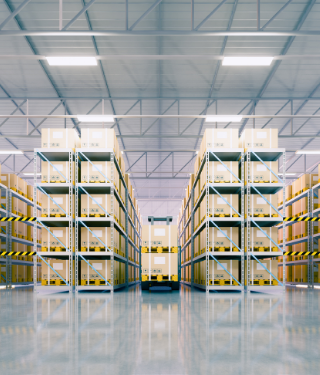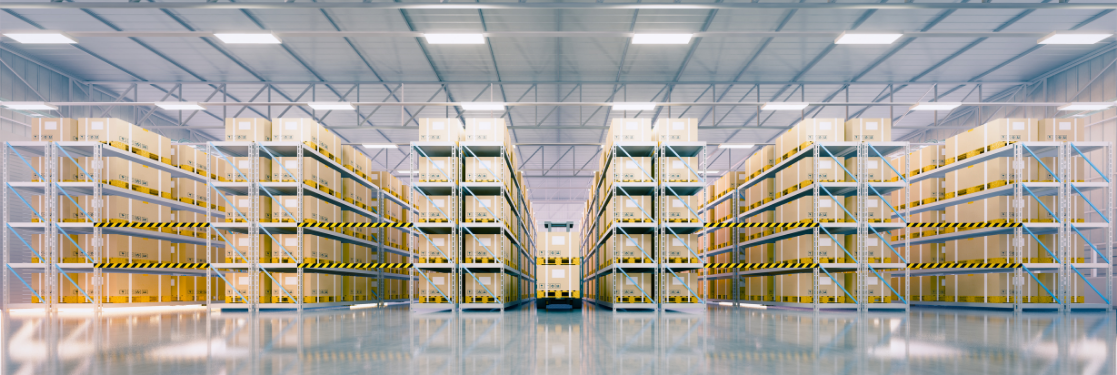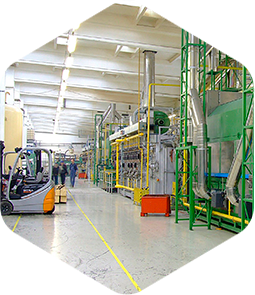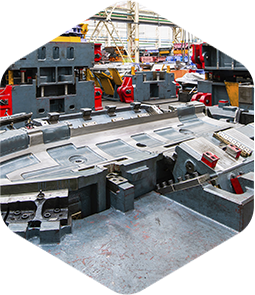In large distribution centers, stocks and warehouses, it is common to have to deal with a large number of products, which creates some planning and organization difficulties for managers and their teams. That’s why it’s so important for businesses like this to have high-quality storage and handling systems. Because, when they are well structured, they can bring several advantages to everyday life.
However, it is also important to keep your business context in mind to determine which systems provide the most benefit to your processes. There are several types of storage available, and each one has its pros and cons compared to the others. Knowing these differences is the best way to make a good decision.
Do you want to learn more about the topic? So, keep reading!
Understand the concept of storage system
Simplifying, these systems are based on all the tools involved in the organization, classification and movement process within a warehouse or warehouse. Also known as a pallet system.
This helps to optimize space, as the structure is vertical, i.e. loads are placed in compartments on several floors. The more levels this system has, the more efficient it is in terms of space usage.
Know the types of storage and handling system
The variety in these systems is quite large, and it is possible to adapt them to different storage contexts. If you have a good understanding of what you are looking for in your inventory, you can look for the system that best meets your demands.
To choose the ideal system for your demand, it is essential to keep in mind the products that will be stored, as well as their characteristics, such as: size, weight, format, quantity, whether the products will be palletized or not. Another essential key is to assess the space available for stock, product turnover and transport flow in the shed.
To help you with this decision, we’ve listed the top 10 types of storage systems available here. Check out!
1. Conventional
It consists of using shelves and aisles, creating enough space for forklifts to pass between them. Common in palletized cargo storage, as it allows easy separation of products and facilitates the handling of high-handling inventories.
It is a simple system, which is supplied in modules, so it can be adapted to different sizes of sheds, being a good option for small and medium-sized companies. In addition to this, the structure is easy to assemble and dismantle, which speeds up any restructuring in the warehouse.
It is also indicated for the storage of products with great dimensional variation and packaging formats, from drums to common boxes.
2. Self-supporting
When building a storage system, it is often limited by the structure of the shed. However, with the self-supporting system, this is not a problem, as the shelves themselves have a structural function.
In this case, the shed is built from the inside out, with shelves being built right after the foundation of the building. The columns of the shelves also work as support for the structure of the building, using the available space to the fullest. Very useful in stocks that need great heights.
It is possible to carry out the movement of loads in a traditional way or in an automated way. However, in the conventional method, you need to limit the height of the building according to the maximum height of the forklifts, which may not be enough for large companies. In these cases, it is possible to use automated storage systems, with much greater capacity.
3. Compact
Also called a “drive-in” system, it eliminates the presence of aisles inside the warehouses, creating shelves with enough space for 1 forklift to pass through, along with the load.
By doing this, the products are taken to the end of the aisle by the forklift, leaving the first to be stored at the bottom of the shelves. Therefore, it is suitable for products with little movement. Widely used in refrigerators, as the reduced space also reduces heat loss.
4. Dynamic
On the other hand, if you need to control the products withdrawn, ensuring that the first item stocked is the first to be shipped, the dynamic model is a good option.
In this model, each shelf has an entrance on one side and an exit on the other, with a sloping mat along the way. It means that whenever a box is inserted, it slides to the end of the “row” of products and will be the first to be withdrawn.
It is widely used by companies that use the FIFO (First in, First out) system, where the oldest product is the first out. This makes it the ideal solution for the storage of perishable products, which have high movement.
5. Push Back
As opposed to the Dynamic system, Push Back makes the last item to be stored in stock always the first to be picked. It works through carts and rails that are on each floor of the shelves.
When a new item is entered, it is placed on the cart. Then, when a new item is stored, the new box pushes the previous one back, causing it to slide down the track and make room. When one of these new boxes is removed, the system pushes the older one back to the foreground.
Naturally, Push Back fits in businesses where LIFO (Last in, First Out) is used, where the newest product is first out. Therefore, it is suitable for non-perishable products.
6. Cantilever
It is a specific type of shelf made to store products of greater length, such as bars, metal profiles, tubes, wooden boards, beams and heavy coils. Instead of creating box-shaped shelves, they are longer, made to hold larger products and heavier items. Therefore, the indication is that the products are accommodated longitudinally.
Naturally, to move these products, it is necessary to use mechanical equipment, such as forklifts.
It is a system widely used in metallurgical industries, in the furniture industry, civil construction works and other large companies.
7. Turret Crane
Turret cranes are not really storage systems, but rather help in the movement of products from stock. They are generally used when self-supporting systems are chosen, due to their large structure.
It is an automatic inventory entry and exit system, consisting of elevators that can move the load vertically or horizontally along a narrow aisle, making the separation, storage and dispatch more efficient in space and energy.
The process is automated through bar codes. The machine reads the code and already knows where it should be stored. This eliminates human mistakes during execution. It is also used in refrigerators, as it works at low temperatures (-50ºC), which normally pose a risk to the health of workers.
8. Overhead cranes
Generally used in the transport of large loads, Overhead Cranes consist of a horizontal winch, used to transport loads that are very large and heavy.
There are two most common types: console type, which uses rails installed in the shed structure (consoles, beams or pillars), and gantry type, whose rails are placed on the floor. The first has the advantage of being built into the shed, which makes it more economical. The second can have its rails extended to the outside area, which facilitates certain interactions.
9. Column winches
Generally used in small spaces, column winches are most common in moving production lines. For example, in machining centers for moving the molds.
10. Conveyor belts
As the name says, they are sets of conveyors used in the distribution of products, providing great agility both in large and small distances. One of its great advantages is that it allows the transport of products on different levels/floors quickly.
It is ideal for products that are already packed as well as for units that are still loose. in bulk. You will see this system in light cargo transportation, being very integrated with the production and packaging line in some industries, such as the food sector.
How to ensure the efficiency of storage systems?
The best performance of these systems depends mainly on the quality of construction and fastening of the components. Having access to strong fastening materials well adapted for these purposes, such as mechanical and chemical anchors, is essential for systems to be more efficient.
If you are looking for these materials, Hard has exactly what you need. We have a large stock of parts for fixing, already used in large works across the country.
Do you want to start using these items in your storage systems? So contact us right now and learn more about our products.







Comentários
Ainda não há comentários. Seja o primeiro a comentar.